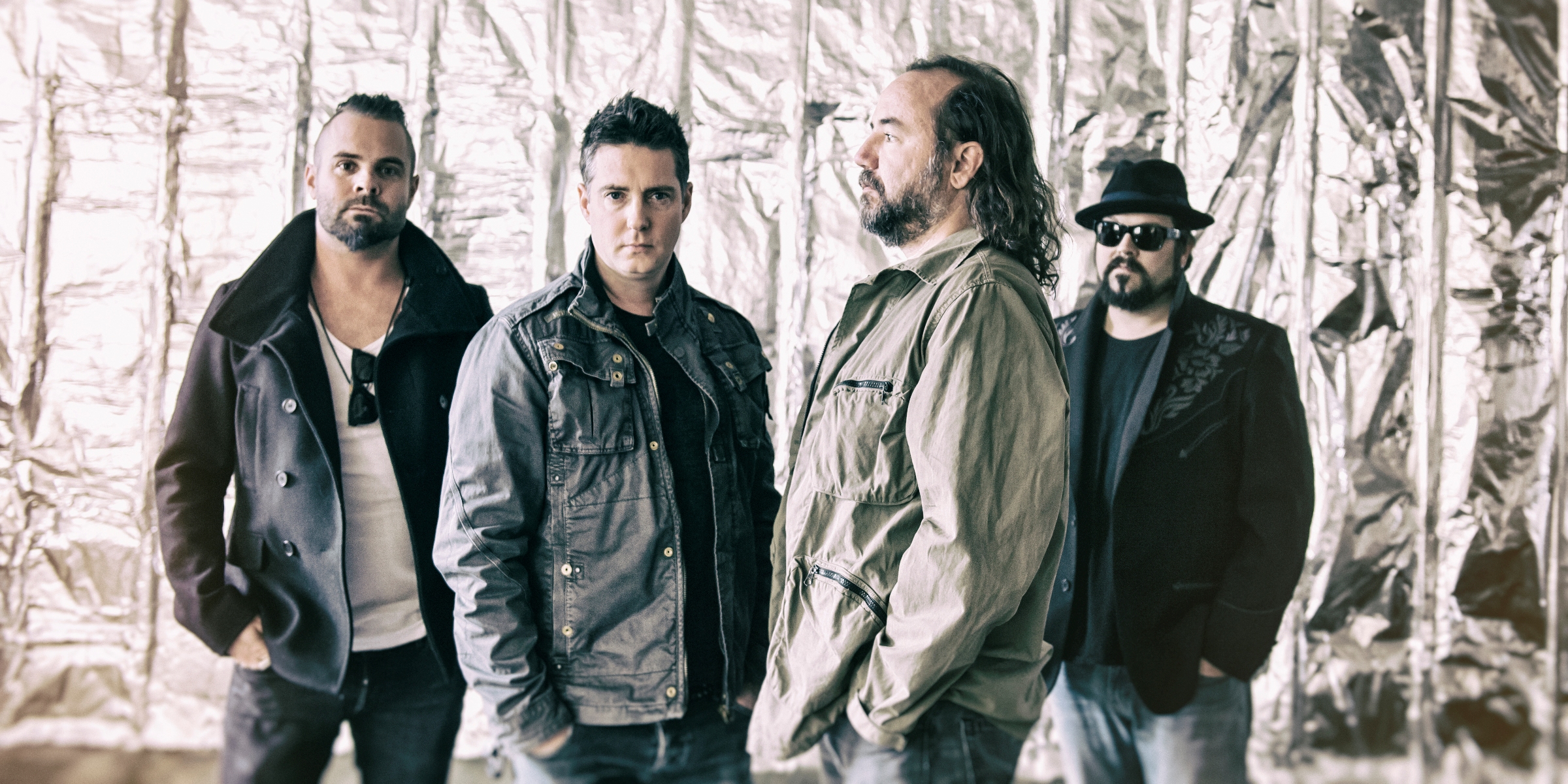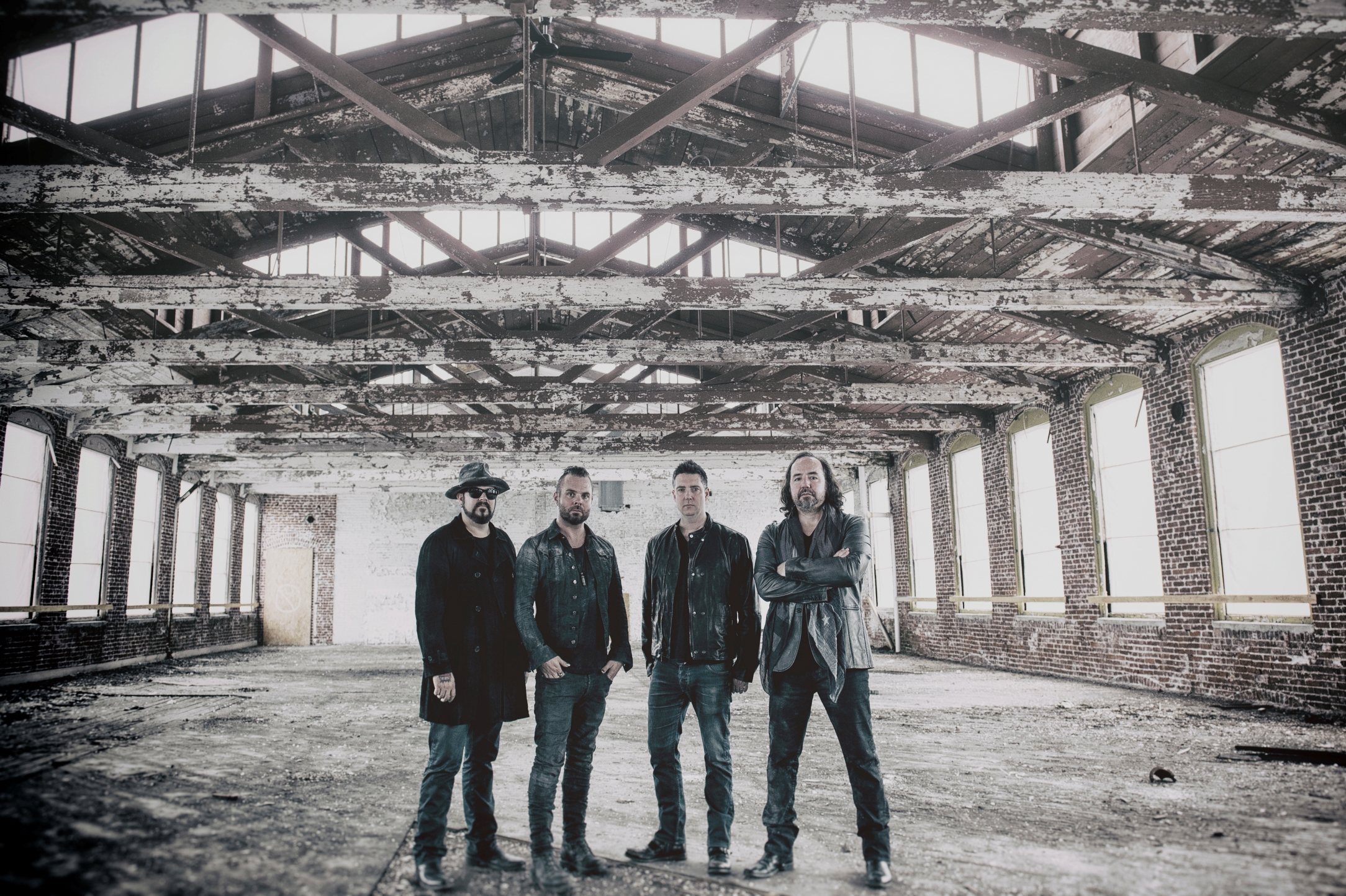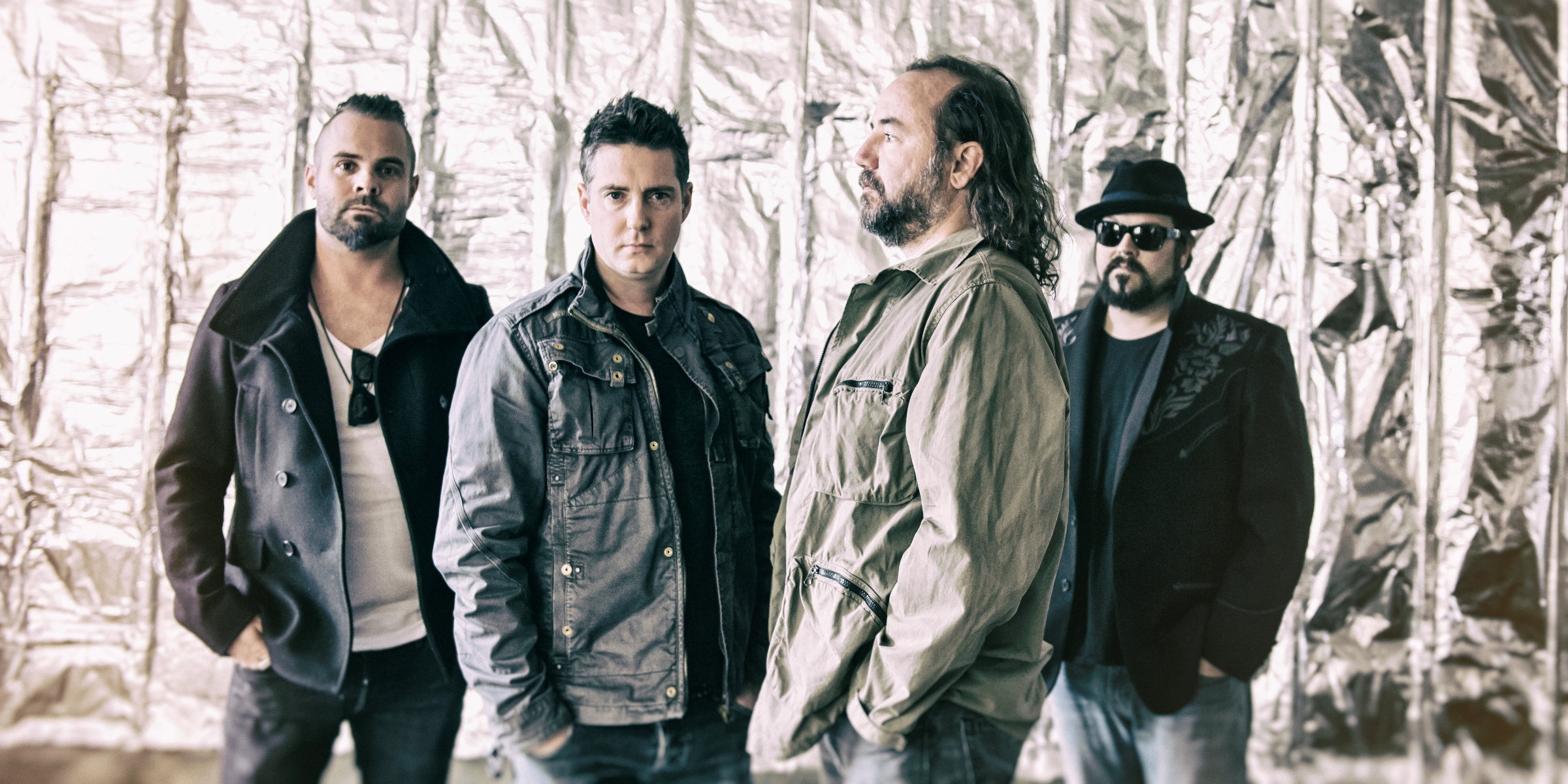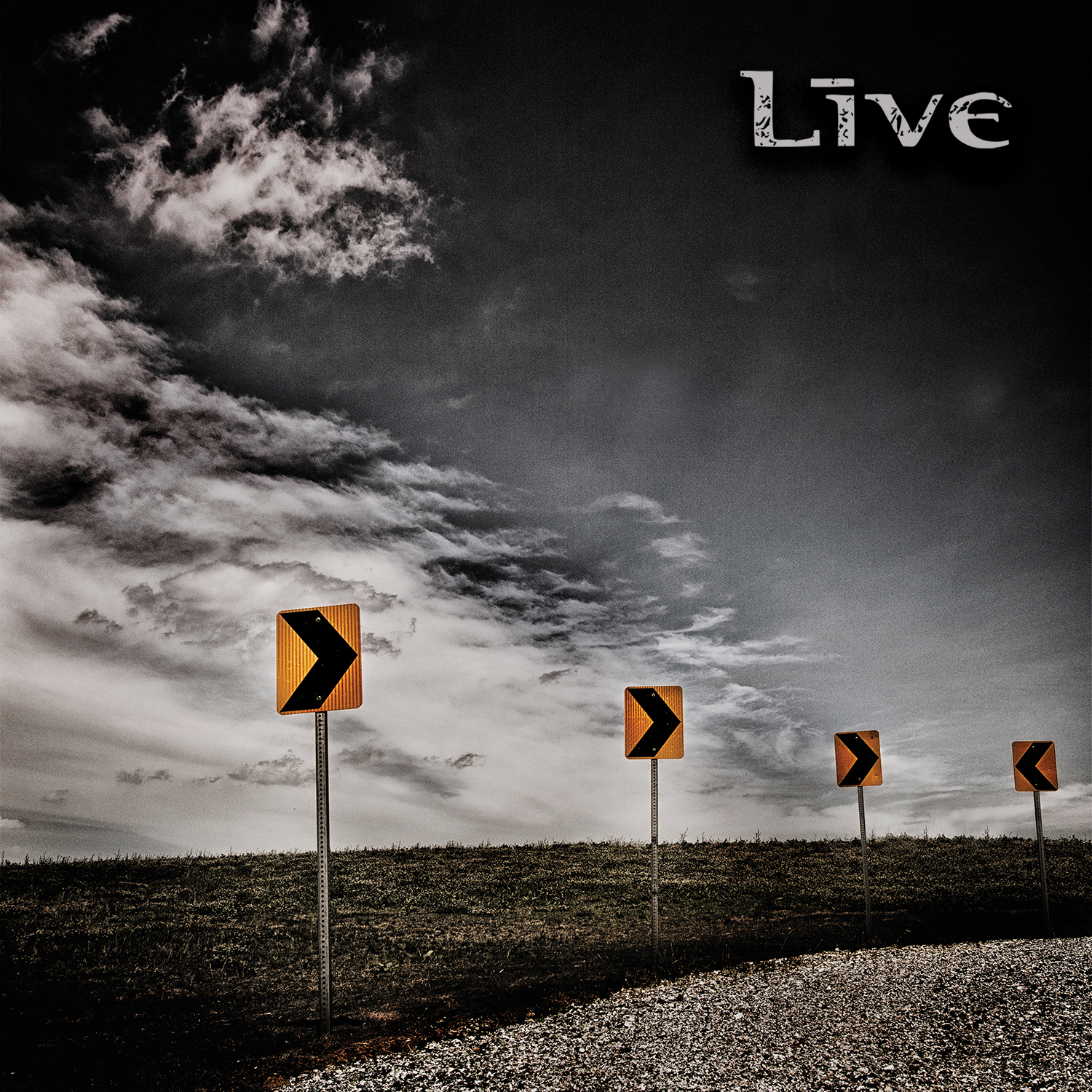'The Turn': Live Guitarist Chad Taylor Discusses New Album, Guitars and ‘Throwing Copper’

It was a turning point when the band Live took a self-imposed hiatus in 2009.
Lead singer Ed Kowalczyk wanted to focus on a solo career while the band wanted to return to a more ensemble-based format. Unable to resolve their impasse, the band and Kowalczyk decided to go their separate ways.
Enter vocalist Chris Shinn, who over the years had developed a strong rapport with members of Live. Now, after a therapeutic three-year soul search, Live are back with a new singer, album and perspective.
The Turn, Live's first album in eight years, reunites the band with Jerry Harrison, who produced three of the band’s previous albums — Mental Jewelry (1991), Throwing Copper (1994) and The Distance to Here (1999).
The release of The Turn also coincides with the 20th anniversary of the group’s 8 million selling Throwing Copper, a monster album that yielded the band’s biggest single, “Lightning Crashes,” which was Number 1 at Modern Rock radio for 10 consecutive weeks.
With 20 million in worldwide album sales to go along with a dynamic new lead singer and a redefined focus, Live are ready to enter the next phase of their career.
Live consists of Chad Taylor (guitars), Patrick Dahlheimer (bass), Chad Gracey (drums/percussion) and Chris Shinn (lead vocals/guitars).
Get The Pick Newsletter
All the latest guitar news, interviews, lessons, reviews, deals and more, direct to your inbox!
I recently caught up with Taylor to discuss The Turn, guitars, the 20th anniversary of Throwing Copper and what he’s most looking forward to with this new version of Live.
GUITAR WORLD: It’s been five years since Live took a hiatus/break. Was the expectation always that you’d one day get back together?
The end of Live 1.0 was open-ended. What we knew at the time was that the chemistry that had been so essential to making Live exuberant, exciting and creative had just dissipated. We were a band that could have probably have used a therapist, but like most men, we just decided that separation was the best idea to try to salvage any kind of relationship we had we each other.
During the time of the break/hiatus the clarity that helped solidify everyone's future was the fact that Ed [Kowalczyk] made it clear he wanted to make solo music, and we made it clear we wanted to make ensemble music. There's such a difference in the way you do it. You can hear in the transition of Live through our subsequent records how the band became more focused on the singer/songwriter than on ensemble creativity. In my opinion, the thing that always made Live was our ability to play off of each other. When we lost that, the spirit of the band went away.
How has the addition of Chris Shinn changed the dynamic of the band?
There were no commercial aspirations when we brought in Chris. It was originally just a group of guys getting together in a small rehearsal facility in York to make music. We played some of the older material and it felt so organic and real that we thought about what we wanted to do with it. We figured out right away that it worked musically so the next step was to see if it worked spiritually. We called it “band therapy” and knew from that point forward that there was no looking back.
How would you describe The Turn?
It's full of energy and confidence yet seeking at the same time. It was actually a three-year process to write this record. The first year was us just getting to know each other. Year two, we took the band on the road. That’s where we evolved and came together. Then it was just a matter of taking the energy and songwriting that we had been working on and coupling it together with Jerry Harrison. We took this big ball of energy and captured it very quickly.
What was the band’s writing process like as it pertains to The Turn?
In ensemble creativity the idea is to put all of the members of the band in a room and act as scribe to capture the energy that's around you. The songs are in there air and we just capture them. So it’s not so much about starting with a riff or anything like that. It’s more about being mentally and physically in the right place.
When you look back at the whirlwind that was Throwing Copper, what comes to mind?
I think it’s a masterful representation of the dynamic and relationship Ed and I shared as songwriters and creative visionaries. It's also the only album Ed and I ever wrote huddled together in a room. We were able to capture lightning in a bottle. The entire recording process only took about two weeks, so almost everything you hear on the album is a live performance.
What’s your current setup like?
I'm really a purist at heart. I play Les Pauls, a “Ruby Lou” Jazzmaster and Strats. I like the sounds of those through a high-gain amp. Usually, that's my Diaz CD-100's and Marshall JMP’s. They've been my go-to amps since I was a kid. Over the years, each song the band recorded required a particular gain and effects stage to create those sonic signatures. With that came the need to switch up and change those controls.
I actually run two separate rigs. My “A” rig contains two modified Marshall JMPs and CD-100s. I rely a lot on my guitar volume so other than gain stages those amps are generally unaffected. My “B” rig is a stereo rig where all of my effects (reverb, delays and modulations) are controlled by a separate pedal. So it’s really four amplifiers in total creating one wall of sound. There's also a company that I recently incorporated that makes handmade cabinets. They’re called JANICE and have been the biggest upgrade to my sound. They're custom built by hand and have been great. It's also the first time I’ve been using Eminence speakers in addition to Celestions. They really bring out a sound that has a high end brilliance I was missing.
What excites you the most about Live 2.0?
It’s the feeling of elation I have about getting my band back and sharing the music with the fans. With each show it's a celebration of our past as well as what the band is doing now. I'm not interested in becoming a heritage rock band. I want to create new, relevant music. It's all about celebrating our relevance. Whatever audience is there to listen to guitar based rock is the audience we're going to play for.
For more about Live, visit freaks4live.com.
James Wood is a writer, musician and self-proclaimed metalhead who maintains his own website, GoJimmyGo.net. His articles and interviews are written on a variety of topics with passion and humor. You can follow him on Twitter @JimEWood.



James is a guitarist and freelance writer who's interviewed some of the biggest names in music. He is the author of four books and his writing credits include work for Guitar World, AXS and Yahoo! as well as for his hometown newspaper where he writes on a variety of topics with both passion and humor. As a guitarist, he's performed everywhere from local bars and nightclubs to some of the biggest stages in front of thousands of music fans.
“His songs are timeless, you can’t tell if they were written in the 1400s or now”: Michael Hurley, guitarist and singer/songwriter known as the ‘Godfather of freak folk,’ dies at 83
“The future is pretty bright”: Norman's Rare Guitars has unearthed another future blues great – and the 15-year-old guitar star has already jammed with Michael Lemmo










